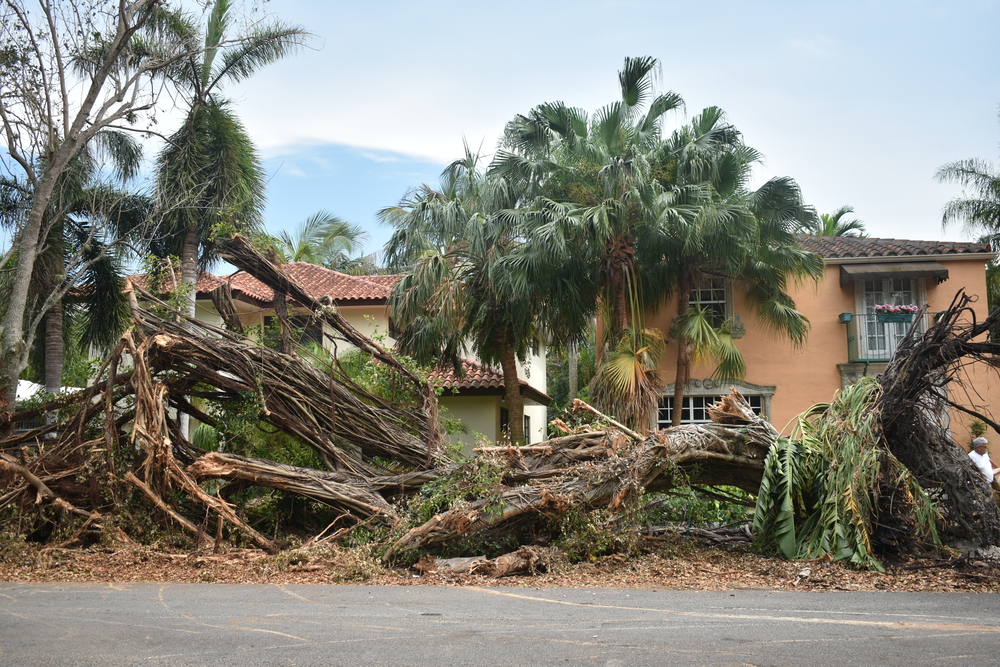Insurance coverage disputes involving both the duty to defend and indemnity necessarily result in the filing of actions seeking declaratory judgments as to both. The jurisdiction where a party, whether it be the insured or insurer, files for relief matters. Florida and federal courts have their own respective declaratory judgment statutes and they are not identical. These differences may likely lead to different timelines in the litigation process.
Florida’s declaratory judgment statute gives both county and circuit courts’ jurisdiction within their respective jurisdictional amounts to declare rights, status and other equitable and legal relations. §86.011 Florida Statues. This statute goes on to read in relevant part that: “[T]he court may render declaratory judgments on the existence or nonexistence” of any immunity, power, privilege or right whether it now exists or may arise in the future. Id. (emphasis added).
The federal statute governing declaratory actions provides that: “[I]n a case of actual controversy . . . any court of the United States, upon the filing of an appropriate pleading, may declare the rights and other legal relations of any interested party seeking such declaration, whether or not further relief is or could be sought.” 28 U.S.C. § 2201. (emphasis added). Although the highlighted differences between the two statutes may seem subtle, how courts have interpreted their respective statutes matters.
The Distinction Between Duty to Defend and the Duty to Indemnify
Before analyzing the differences between the two statutes and the cases interpreting them, it is important to recap the differences between the duty to defend and indemnify. As we all know, the duty to indemnify is separate and distinct from the duty to defend. Northland Cas. Co. v. HBE Corp., 160 F. Supp. 2d 1348, 1360 (M.D. Fla. 2001). The duty to defend is broader than the duty to indemnify and depends “‘solely on the allegations in the complaint[s] filed against the insured.’” Id. “[T]he duty to indemnify is dependent upon the entry of a final judgment, settlement, or a final resolution of the underlying claims by some other means.” HBE Corp., 160 F. Supp. 2d at 1360; see also Westport Ins. Corp. v. VN Hotel Grp., LLC, 761 F. Supp. 2d 1337, 1348 (M.D. Fla. 2010) (“Except where there is no duty to indemnify for want of a duty to defend, an insurer’s duty to indemnify is dependent on the outcome of a case . . .”). “[W]hereas the duty to defend is measured by the allegations of the underlying complaint, the duty to indemnify is measured by the facts as they unfold at trial or are inherent in the settlement agreement.” HBE Corp., 160 F. Supp. 2d at 1360; see also Stephens v. Mid-Continent Cas. Co., 749 F.3d 1318, 1324 (11th Cir. 2014) (an insurer’s duty to indemnify “is narrower [than the duty to defend] and is determined by the underlying facts adduced at trial or developed through discovery during the litigation.”; “In other words, to determine whether there is a duty to indemnify, one looks at the actual facts, not only those that were alleged in the state court complaint.”).
The Federal Declaratory Judgment Act and Cases Interpreting Same
The Federal Declaratory Judgment Act, since its inception, has been understood to confer on federal courts unique and substantial discretion in deciding whether to declare the rights of litigants.” Wilton v. Seven Falls Co., 515 U.S. 277, 286 (1995). The United States Supreme Court has “repeatedly characterized the Declaratory Judgment Act as an enabling Act, which confers a discretion on the courts rather than an absolute right upon the litigant.” Id. at 286-87. A district court thus always has discretion whether to entertain an action for a declaratory judgment. Cas. Indem. Exch. v. High Croft Enters., Inc., 714 F. Supp. 1190, 1193 (S.D. Fla. 1989) (citing Brillhart v. Excess Ins. Co., 316 US 491 (1942) and Public Affairs Assocs., Inc. v. Rickover, 369 U.S. 111 (1962)); see also Angora Enters., Inc. v. Condo. Ass’n. of Lakeside Village, Inc., 796 F.2d 384, 387 (11th Cir. 1986) (“the district court could have properly refused to address the merits of the claim by resort to its inherent discretion to decline to entertain a declaratory action.”). The Eleventh Circuit has declared that the Act “only gives the federal courts competence to make a declaration of rights; it does not impose a duty to do so.” Ameritas Variable Life Ins. Co. v. Roach, 411 F.3d 1328, 1330 (11th Cir. 2005). As such, “[g]ratuitous interference with the orderly and comprehensive disposition of a state court litigation should be avoided.” Id. (citing Brillhart v. Excess Ins. Co. of Am., 316 U.S. 491, 495 (1942)).
The Federal Declaratory Judgment Act provides that a declaratory judgment may be issued only in the case of an “actual controversy,” which must be immediate, substantial and continuing and must create a “definite, rather than speculative threat of future injury.” 28 U.S.C. §2201 et seq.; Emory v. Peeler, 756 F.2d 1547, 1552 (11th Cir. 1985). The Act is a grant of jurisdiction only as to those rights and liabilities that are immediate and real, or that are certain to arise. See, e.g., Calderon v. Ashmus, 523 U.S. 740, 746-47 (1998). The “case or controversy” requirement of the Constitution limiting federal court jurisdiction similarly requires that “a plaintiff must have suffered some actual injury that can be remedied or redressed by a favorable judicial decision.” Nat’l Advertising Co. v. City of Ft. Lauderdale, 934 F.2d 283, 285-86 (11th Cir. 1991). As such, federal courts have broad discretion to either dismiss without prejudice or stay unripe claims. Pro Net Global Ass’n, Inc. v. U.S. Liab. Ins. Co., Nos. 3:02-cv-396-J-32TEM, 3:02-cv-617-J- 32TEM, 2004 WL 6062923, at *2 (M.D. Fla. Mar. 8, 2004) (citing Wilton, 515 U.S. at 288).
Because an insurer’s duty to indemnify generally depends on the outcome of the underlying dispute against the insurer’s insured, federal court courts have held that an insurer’s duty to indemnify is not ripe until the underlying suit is resolved, and thus either dismiss or stay the claim involving the declaration of rights involving indemnity. See, e.g., Summit Contractors, Inc. v. Amerisure Mut. Ins. Co., No. 8:13-CV-295-T-17TGW, 2014 WL 936734 (M.D. Fla. Mar. 10, 2014) (dismissing for lack of subject matter jurisdiction pursuant to Rule 12(b)(1) request for declaration as to a carrier’s duty to indemnify for pending underlying claims as unripe); Allstate Prop. & Cas. Ins. Co. v. Tomlinson, No. 2:14–cv–1940–HRH, 2015 WL 3439129 (D. Ariz. May 28, 2015) (same); Pro Net, 2004 WL 6062923 (dismissing request for declaration as to a carrier’s duty to indemnify until underlying actions are resolved); Mid-Continent Cas. Co. v. Gozzo Dev., Inc., No. 17-CV-80362, 2017 WL 3578846, at *1 (S.D. Fla. July 19, 2017).
For example, in Mid-Continent Cas. Co. v. Nassau Builders, Inc., No. 3:16-CV-921-J-34JRK, 2017 WL 1191383 (M.D. Fla. Mar. 31, 2017), the Middle District of Florida stayed a declaratory action case until the underlying action was resolved. Importantly, the court noted that the duty to indemnify will “necessarily turn on complex factual findings and issues of Florida law which are currently pending in the Underlying Action before the state court.” Id. at *2.
Florida’s Declaratory Judgment Statute
Florida courts, in deciding issues involving the duty to indemnify, have found it important to determine whether the issue of coverage is dependent on the resolution of factual issues in the underlying action. If the declaratory action was not dependent on the factual issues in the underlying action courts would not abate or dismiss the declaratory action and instead determine the indemnity issue. For example, in the case of Britamco Underwriters, Inc. v. Central Jersey Invs., Inc., 632 So. 2d 138, 139 (Fla. 4th DCA 1994), the court held that where issue of coverage was not dependent on the resolution of fact issues common to underlying litigation, it was appropriate to determine in declaratory action prior to conclusion of underlying suit. Likewise, in Travelers Ins. Co. v. Emery, 579 So. 2d 798, 800-02 (Fla. 1st DCA 1991), the issue of coverage under a business pursuits exclusion was appropriate for declaratory action prior to filing of underlying action where resolution of this issue leaves material issues in underlying action unaffected. In Allstate Ins. Co. v. Conde, 595 So. 2d 1005, 1008 (Fla. 5th DCA 1992), the appellate court noted that under unusual circumstances where the underlying complaint alleges two alternative, mutually exclusive theories of liability, a court may look beyond the allegations of complaint and determine facts that will answer the duty to defend issue and also thereby answer the duty to indemnify issue.
As such, when the theories of liability in the underlying action and the factual issues associated with indemnity were intermingled, Florida state courts were more likely to abate or dismiss the indemnity issues and allow the facts to develop in the underlying action. In Home Insurance Company v. Gephart, 639 So. 2d 179 (Fla. 4th DCA 1994), the insurer was not entitled to a declaration of the duty to indemnify where the case involved some of the same factual questions that were present in the underlying action and where theories of liability were not mutually exclusive. Marr Investments, Inc. v. Greco, 621 So. 2d 447 (Fla. 4th DCA 1993), is another example. In Marr, a bar owner sought a declaration obligating its insurer to defend it against claims by a patron. Id. On appeal, the court found that the trial court’s finding that there was no coverage was premature and therefore the issue of indemnity was not ripe. Id. at 449. The appellate court stated that the duty to indemnify should be deferred until liability was decided in the underlying action. Id.
In 2005, the Florida Supreme Court heard the case of Higgins v. State Farm Fire and Casualty Company, 894 So. 2d 5 (Fla. 2005). The facts of Higgins are relatively simple. The initial allegation of the complaint filed alleged that while visiting Mrs. Bradley, the estranged wife of Mr. Higgins, Mr. Higgins came to her home and intentionally assaulted Mrs. Ingalls. Id. Mrs. Ingalls thereafter field her amended complaint wherein she alleged that the actions of Mr. Higgins were negligent. Id. Mr. Higgins demanded that State Farm, the homeowner’s carrier, provide him a defense and indemnity for the claims being asserted. Id. State Farm filed a declaratory action as to the duty to defend and indemnify and argued that despite the negligence label, the alleged conduct was still willful and intentional and therefore excluded under the homeowner’s policy. Id. at 8. The declaratory action proceeded to trial and the jury found that Higgins actions were intentional. Id. On appeal, the Fourth District Court of Appeal found that it was appropriate for the declaratory action to decide whether Higgins’ conduct was excluded under the policy. The appellate court also certified the following question to the Supreme Court:
May the insurer pursue a declaratory action in order to have declared its obligation under an unambiguous policy even if the court must determine the existence or nonexistence of a fact in order to determine the insurer’s responsibility?
Id. at 9.
The Florida Supreme Court agreed with the Fourth District that sections 86.011(2), 86.051, 86.071, and 86.101, Fla. Stat., support the conclusion that an insurer may pursue a declaratory action which requires a determination of the existence or nonexistence of a fact upon which the insurer’s obligations under an insurance policy depend. The Court went on to state that:
We conclude that it is illogical and unfair to not allow insureds and insurers to have a determination as to whether coverage exists on the basis of the facts underlying a claim against an insurance policy. Why should an insured be placed in a position of having to have a substantial judgment against the insured without knowing whether there is coverage from a policy? Why should an insurer be placed in a position of either paying what it believes to be an uncovered claim or being in jeopardy of a bad faith judgment for failure to pay a claim? These are precisely the issues recognized by this Court in other contexts that are intended to come within the purpose of the declaratory judgment statute’s “relief from insecurity and uncertainty with respect to rights, status, and other equitable or legal relations.
Id. at 15. The Court thus concluded that the Florida declaratory judgment statutes authorize declaratory judgments in respect to insurance policy indemnity coverage and defense obligations in cases in which it is necessary to resolve issues of fact in order to decide the declaratory judgment action. Id. at 16.
In light of this holding, some carriers are of the mindset that Florida now permits, in all instances, the filing of a declaratory action in state court which will allow them to determine early on both the issue of defense and indemnity. However, this reading of Higgins is not accurate. Important to the Supreme Court’s ruling was the fact that depending on the determining of the factual issue, the claims asserted would be either covered or not. In this regard, the Court went on to site to the factors identified in Allstate Insurance Co. v. Conde, 595 So.2d 1005, 1008 (Fla. 5th DCA 1992), which a court should consider when analyzing whether to allow the factual issues of indemnity to be decided ahead of the underlying action. Id. at 15. One consideration is what issues are involved in the two actions. Id. In Conde, like the Higgins action, the issue was whether all claims against the insured arose from acts which were intentional or negligent (covered or uncovered). Id.
Another factor which a court should weigh is whether proceeding to a decision as to the insurance indemnity issue will promote settlement and avoid the problem of collusive actions between claimants and insureds in order to create coverage where coverage does not exist under the true facts. Id. at 16. As noted by the Conde court, pleadings can create a perfect conspiracy between plaintiff and defendant in the underlying action. Id. As quoted by the Supreme Court in Higgins, the Conde court went on to state that:
The plaintiff pleads negligence in a case like this because he wants a deep pocket from which to satisfy a judgment or, even better, to obtain a settlement. Normally when a defendant is sued on a theory that is inadequately pleaded, he gets the claim dismissed or, if the claim is invalid under controlling law, he gets a summary judgment. But in cases such as this the normal antidotes for invalid claims do not work. An insured defendant is often totally committed to the negligence pleading of the plaintiff because as long as the negligence claim is included in the complaint, the insured must be provided a defense on the intentional tort claim, a benefit he would not have if the spurious negligence claim were missing.
Id. at 17.
Finally, a court should weigh the fact that that there are cases with insureds who have resources independent of insurance and that it would be immaterial to the claimant whether the insured’s conduct was covered or not covered by indemnity insurance. Id. To hit this point home, the Supreme Court stated:
We agree with Judge Diamantis that the resolution of the timing issue in accord with International Surplus Lines Insurance Co. v. Markham, 580 So.2d 251 (Fla. 2d DCA 1991), in which the court indicated that the duty to defend issue should be resolved early but the insurance indemnity action abated until after the underlying tort action is final, may be necessary in some cases. But, for the reasons stated above, we believe that there are factors which weigh in favor of trying the indemnity coverage issue first.
Id.
Importantly, the circumstances of each case may dictate where the appropriate jurisdiction is to file a declaratory relief action based on the above case law.








